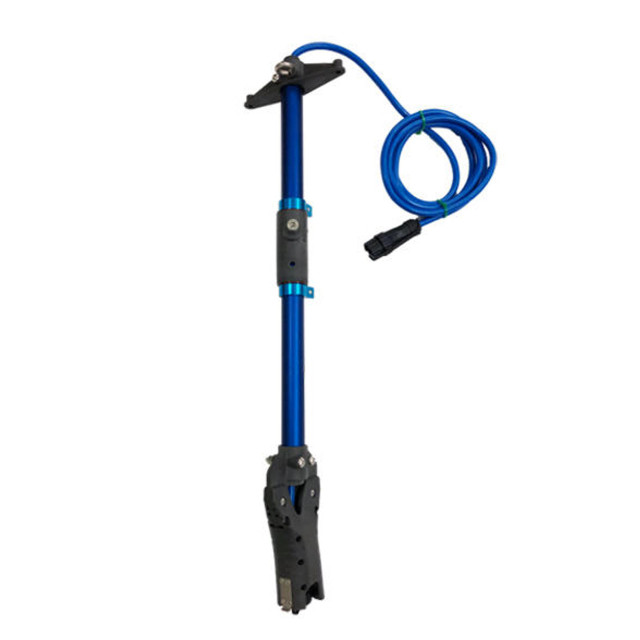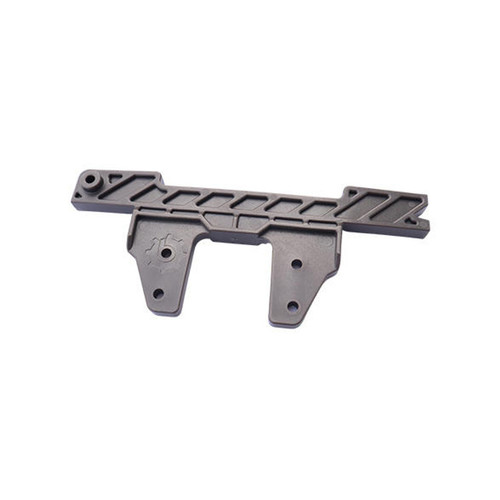Kayaking With Neck and Shoulder Pain
16th May 2024
Table of Contents:
- Understanding Neck and Shoulder Injuries in Kayaking
- Preparing For Kayaking With Neck and Shoulder Pain
- Choosing the Right Kayak For Neck and Shoulder Support
- Optimizing Your Kayaking Technique To Avoid Neck & Shoulder Pain
- On Water Strategies to Manage Neck and Shoulder Pain
- After-Kayaking Care For Neck and Shoulder Pain
- Flip-Kat® Advantages For Those With Neck and Shoulder Issues
Understanding Neck and Shoulder Injuries in Kayaking
While kayaking is generally very risk free, some common injuries occur. Being on the water can create unpredictable situations. To avoid injury, it's crucial to emphasize the role of physical fitness. Ensure you are fit and ready to face anything the water can throw your way, so you don't end up adrift. The Flip-Kat® is perfect for those with neck and shoulder injuries. Its pedal-drive system is ideal for those with these injuries to enjoy the outdoors.
Whiplash
Most common in car crashes, whiplash occurs when the body is forced to a sudden stop. The neck then gets whipped forward and back, thus creating soreness or even a sprain in the neck muscles. This can happen while kayaking in different cases. The most common include:
- Unexpectedly hitting a large wave, thrashing the kayak backward
- Hitting a submerged object at a fast speed
- Coming to shore too fast
- Hitting another kayaker or boater
Whiplash can have lifelong effects, such as a stiff neck or the inability to look around you. This can limit your range of motion and how you see around you, affecting your kayaking abilities.
Rotator Cuff Tear
The rotator cuff is a group of muscles and tendons that join at your shoulder joint. These muscles and tendons keep your shoulder stable and help it move. An injury to any of these can lead to a lack of range of motion or pain from moving your shoulder. A rotator cuff tear can range from small tears that may take up to 3 months to heal to more serious tears that can take between 6 months and one year to heal. While kayaking, stretch your shoulders properly and have a good baseline fitness level to avoid this injury.
Shoulder Impingement Syndrome
Otherwise known as swimmer's shoulder, it is the inflation of the muscles and tendons around the shoulder joint. It is most commonly caused by the overuse of similar muscles, which causes the area to swell. This is very common in people who kayak often because of the repetitive motion of paddling.
Frozen Shoulder
Frozen shoulder, also known as adhesive capsulitis, is stiffness and pain in the shoulder joint. No one knows why a frozen shoulder occurs, but it is most common after a shoulder injury or surgery. There are typically three stages of a frozen shoulder.
- Freezing Stage
- Frozen Stage
- Thawing Stage
Preparing For Kayaking With Neck and Shoulder Pain
The Importance of a Pre-Kayaking Fitness Routine
Like any sport, a well-developed stretching routine before and after is necessary for better and safer performance. Many people recall days when they could simply walk out the door for a run or carry a kayak to the beach and hop in without any preparation. However, the older you get , the more you have to stretch to keep your body in tip-top shape. Developing a routine before you get in that kayak is essential to preventing injury and increasing your performance on the water.
Stretching and Warm-Up Activities to Prevent Neck and Shoulder Injuries
An example of a quick 5-minute stretching routine could be something like this.
Tips for maneuvering your kayak in tight spaces
- Touch your toes
- Arm circles
- Quad stretch
- Overhead shoulder stretches
- Seated back twists
- Neck circles
Stretching after a long day on the water can decrease soreness. A similar routine can be followed after getting out of the water. This will lead to a healthier kayaking practice and prevent and reduce neck and shoulder injuries.
Choosing the Right Kayak For Neck and Shoulder Support
Features to Look For In a Kayak When You Have Neck & Shoulder Pain or Injuries
If you have shoulder pain, one of the best options to limit your paddling is to look for a pedal-driven kayak rather than a paddle-powered one. This allows you to be comfortably seated and power your kayak as if it were a bicycle, allowing you to roam the water without inflicting any pain on your shoulders. For those with neck pain or injuries, you should look for a kayak that provides the most support for your neck and back. A seat with ergonomic support can have a massive positive impact on your neck. Be sure you have a full range of motion in your neck before going out on the kayak.
View this post on Instagram
How the Flip-Kat® Supports Individuals With Neck and Shoulder Pain
The Flip-Kat® is perfect for anyone with neck and shoulder pain or those looking to prevent neck and shoulder injuries. The seat's design is adjustable and can be customized to create a perfect fit for those with neck injuries and a posture suitable for them. If you have shoulder injuries, do not worry. The Flip-Kat® has a pedal drive system and an adaptable option to add a Bixpy Motor to cruise anywhere. This means you don't even have to paddle. You can fully navigate any waterway with the pedal system.
Optimizing Your Kayaking Technique To Avoid Neck & Shoulder Pain
Correct Paddle Technique To Reduce Neck and Shoulder Strain
While paddling, improper technique can lead to pain and injuries. Being in good shape is one of the easiest ways to prevent bad paddling habits from developing. Some things to keep in mind while paddling to keep good form include:
- Keeping your back straight with good posture
- Having an even-balanced grip on the paddle
- Torso rotation with each paddle
- Smooth paddle stroke technique
Adjusting Your Position and Posture For Comfort
Some kayaks, like the Flip-Kat®, have an adjustable seat that allows you to achieve the perfect fit and feel while pedaling or paddling. Others do not have this luxury, so you must adjust your posture. At first, keeping a solid posture with a straight back may be hard, but the benefits are that you are practicing good form to prevent future injury.
View this post on Instagram
On Water Strategies to Manage Neck and Shoulder Pain
Managing Your Kayak Durations and Taking Breaks
Taking breaks and knowing your fitness level is imperative for long-term kayaking success. Be sure to know your body and yourself. If you tire after an hour of riding, don't leave yourself stranded by taking on a 3-hour kayaking adventure without breaks. Be sure to build your fitness level with regular breaks and gradually increase the duration of your kayak journeys. This is not only for your safety but also for your overall physical health.
After-Kayaking Care For Neck and Shoulder Pain
Cool-Down Stretches and Recovery Practices
It is always a hard mental task to complete post-kayaking stretches, but they lead to massive health benefits and increase the longevity of your kayak journeys. Stretching after kayaking will lead to less soreness in the following days, meaning you can do more kayaking! Some common cool-down stretches include:
- Arm across body shoulder stretch
- Overhead shoulder stretch
- Seated back twist
- Neck circles
- Touch your toes
- Wrist and forearm stretches
- Quad stretch
When to Seek Medical Attention For Neck and Shoulder Pain
Be conscious of your body. If your neck and shoulder pain is too persistent and too much to bear, talk to your doctor about it. Never push your body beyond its comfortable limits. If you have consistent pain in your neck and shoulders, contact your doctor before kayaking.
Flip-Kat® Advantages For Those With Neck and Shoulder Issues
Features of The Flip-Kat® That Help Prevent and Alleviate Neck and Shoulder Pain
The Flip-Kat® is perfect for those looking for a kayak that will prevent and alleviate neck and shoulder pain. For your neck, the Flip-Kat® has an adjustable and customizable seating seat for you to find the perfect fit. The seat has been ergonomically designed for maximum comfort. The Flip-Kat® has an innovative pedal drive system for those with shoulder issues. Everything is adjustable to fit your needs. It also has the option to add a Bixpy motor. Allowing anyone the freedom to travel anywhere without using their shoulders for paddling. Order your Flip-Kat® today!











